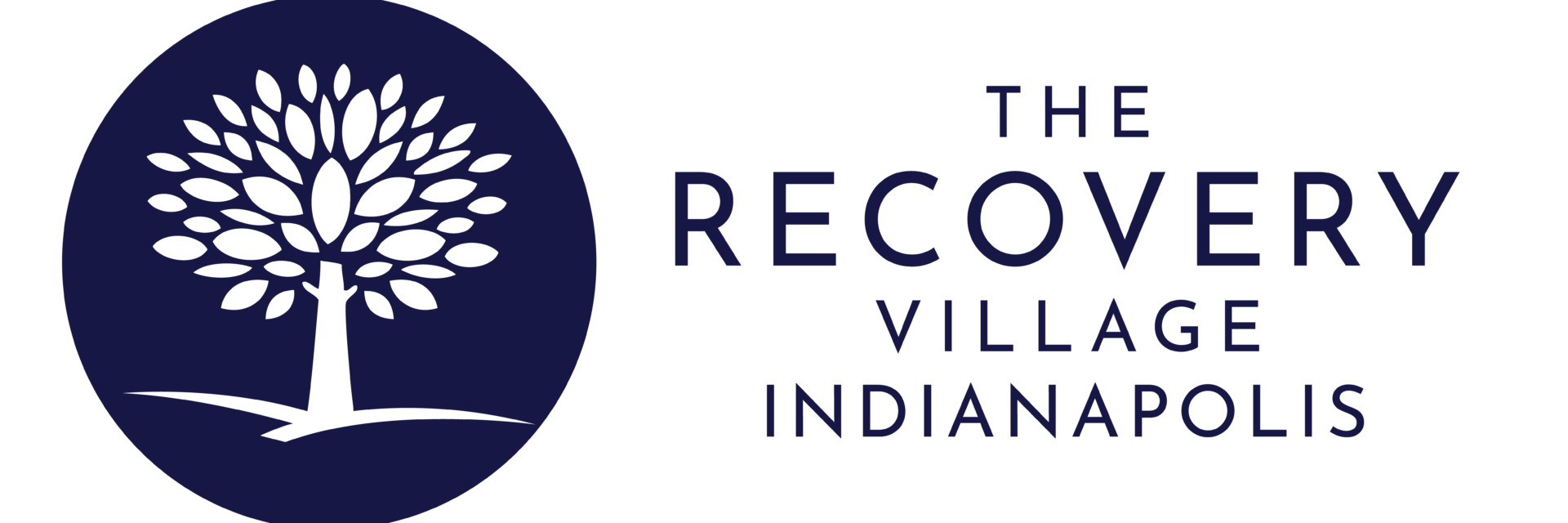Methamphetamine Addiction: Signs, Effects, Stats & Recovery
Written by The Recovery Village Indianapolis
& Medically Reviewed by Dr. Jessica Pyhtila, PharmD
Medically Reviewed
Last updated: 09/06/2024
Methamphetamine, commonly known as meth, has seen a concerning rise in abuse, addiction, and overdose fatalities in the United States. It’s crucial to comprehend the potential for meth abuse, identify its signs, and understand the risks it poses.
Key Takeaways
- Methamphetamine Overview: Methamphetamine (meth), a potent and addictive drug, often enters the US illegally and is classified as a Schedule II controlled substance due to its high addiction potential and dangerous effects.
- Methods of Use: Meth can be consumed by smoking, snorting, injecting, or oral ingestion, producing an intense high and euphoria, which are highly addictive.
- Short-Term Effects: Even occasional use can lead to severe physical and psychological effects, including increased heart rate, high blood pressure, erratic behavior, and hallucinations.
- Long-Term Effects: Prolonged meth use causes permanent damage to vital organs, severe dental issues, and cognitive decline that resembles Alzheimer’s disease.
- Secondhand Exposure: Non-users, particularly children, can suffer from health issues due to proximity to meth users or meth manufacturing, including lung problems, poisoning, and developmental issues.
- Overdose Risks: Meth overdose can be fatal, causing strokes, heart attacks, or organ damage; immediate medical attention is critical for survival.
- Signs of Addiction: Meth addiction symptoms include significant physical changes like weight loss and “meth mouth,” along with behavioral signs such as isolation, deceitfulness, and criminal activity.
- Recovery Challenges: Meth addiction is challenging to overcome due to its strong physical dependency, with a high relapse rate exceeding 90%, but professional treatment can significantly improve recovery chances.
- Treatment and Detox: Successful meth addiction recovery typically starts with medical detox to manage withdrawal symptoms, followed by comprehensive rehab and aftercare programs.
- Statistics: As of 2021, meth use affects about 2.5 million Americans, with the highest usage among adults aged 26 and older, and significant representation among multiracial and white populations.
What Is Methamphetamine?
Methamphetamine, also known as meth, is a very strong drug that is often moved illegally into the United States by drug gangs from Mexico. It is considered a very dangerous drug and is classified as a Schedule II controlled substance in the United States. This means that it can be very addictive and dangerous for people who use it.
It can be consumed through smoking, snorting, injecting or oral ingestion. Meth induces an intense high and a rush of pleasurable sensations, leading to feelings of happiness, self-confidence and energy. This intense euphoria can be addictive.
Meth comes in various forms, including a white powdered version and a crystalline form called crystal meth. After taking meth, the person can experience a short burst of energy that can last up to half an hour, followed by a longer period of feeling high that can go on for up to 16 hours.
Using meth can lead to extreme aggression, psychotic episodes and harm to vital organs such as the heart and brain. Prolonged use can cause premature aging and dental issues.
What Are the Signs of Meth Addiction?
As meth addiction deepens, it becomes the primary focus of a person’s life. Signs of meth addiction may include lying, stealing or engaging in criminal activities to sustain the habit, becoming deceitful, isolating from friends and family and obsessing over meth use.
Physical Signs of Meth Addiction
Individuals dealing with meth addiction often undergo noticeable physical changes:
- Dental problems: “Meth mouth” includes tooth decay, gum disease and oral health issues. The use of methamphetamine causes dryness in the mouth, leading to decreased saliva production, which usually helps prevent acid erosion of teeth enamel. Those who are addicted to methamphetamine may also disregard their oral hygiene. Around 35% of methamphetamine users have reported experiencing “meth mouth,” and 32% have reported having broken teeth as a result.
- Weight loss: Approximately 28% of meth users experienced significant weight loss.
- Premature aging: Meth expedites cell aging, making users appear older.
- Skin problems: Skin scabs and sores are common due to meth-induced hallucinations. Skin infections, sores and abscesses were reported by approximately 32% of those who used meth.
Behavioral and Emotional Signs of Meth Addiction
People struggling with meth addiction can also exhibit various behavioral and emotional signs, including:
- Increased Activity and Restlessness: Excessive energy, fidgeting, and an inability to sit still.
- Erratic Sleep Patterns: Staying awake for long periods followed by extended sleep.
- Paranoia and Delusions: Unfounded fears or beliefs, including hallucinations.
- Aggressive or Violent Behavior: Unprovoked anger, irritability, and hostility.
- Social Withdrawal: Isolation from family, friends, and previously enjoyed activities.
- Obsessive Behavior: Fixation on repetitive tasks or activities, like cleaning or picking at skin.
- Mood Swings: Rapid shifts between euphoria, anxiety, and depression.
- Poor Decision-Making: Risky behaviors, impulsiveness, and neglecting responsibilities.
- Neglect of Appearance: Decline in personal hygiene and physical health.
- Financial or Legal Problems: Unexplained need for money, stealing, or legal issues due to drug-related behavior.
How Does Meth Addiction Work?
Methamphetamine stimulates the release of chemicals like dopamine and serotonin in the brain, triggering euphoria and affecting the brain’s reward and motivation centers.
When the meth’s effects wear off, it depletes dopamine and serotonin levels, causing anxiety and depression. This crash often leads to strong cravings, perpetuating the cycle of meth use and increasing the risk of addiction.
Physical Addiction to Meth
Physical addiction to meth can occur when the body becomes reliant on the drug to function properly. When trying to quit meth while physically addicted, withdrawal symptoms such as agitation, depression, increased appetite, and muscle aches can occur. The severity of these symptoms is dependent on the quantity and duration of meth use.
Heavy meth use elevates the risk of physical addiction. In The Recovery Village’s recent study, 71% of current and former meth users were categorized as heavy users.
The Path to Meth Addiction
The journey to meth addiction is complex and varies from person to person. Addiction occurs when individuals struggle to stop using meth despite adverse consequences in their lives, such as job loss or legal issues.
The Impact of Meth and Meth Addiction
Meth use can wreak havoc on both the body and mind, whether in the short or long term. The longer the drug is used, the greater the risk of addiction and severe side effects.
Short-Term Effects of Meth
Even occasional meth use can lead to various physical and psychological effects, including:
- Loss of appetite
- Increased heart rate
- High blood pressure
- Elevated body temperature
- Dilated pupils
- Sleep disturbances
- Nausea
- Seizures
- Potential fatality
Psychological effects of short-term meth use may include:
- Erratic behavior
- Panic
- Irritability
- Overexcitement
- Violence
- Hallucinations
- Psychosis
Long-Term Effects of Meth
Long-term meth use can inflict permanent damage on the body and brain, with some effects being irreversible. Physical consequences include:
- Damage to heart and brain blood vessels
- High blood pressure, a risk factor for heart attacks and strokes
- Harm to the liver, kidneys and lungs
- Nasal tissue destruction if meth is snorted
- Lung and respiratory issues if meth is smoked
- Infectious diseases if meth is injected
- Malnutrition
- Severe dental problems
- Epilepsy
Mental health and cognitive problems from long-term meth use may manifest as:
- Confusion, exhaustion, disorientation and apathy
- Psychosis
- Depression
- Cognitive changes akin to Alzheimer’s disease
Recent data reveals that 87% of meth users reported meth-related health issues, including dental problems (34%), nasal damage (23%), high blood pressure (24%), hallucinations (16%), liver and kidney damage (11%), seizures (8%) and heart attacks or strokes (7%).
The Hazards of Secondhand Meth Exposure
Being in proximity to individuals using or manufacturing meth, even if you don’t use it yourself, poses significant dangers, particularly for children. This is termed secondhand exposure.
Children exposed to meth users are at risk of various health issues, including lung, skin and dental problems. Additionally, the manufacturing process of meth involves toxic substances that can linger on surfaces, leading to:
- Poisoning
- Chemical burns
- Damage to vital organs
- Cancers like leukemia and lymphoma
- Anemia
- Infections
- Developmental and growth problems in children
Meth Overdose
Overdosing on meth can have fatal consequences, as it can lead to strokes, heart attacks or organ damage due to elevated body temperature. Meth remains active in the body for an extended period, increasing the risk of overdose.
Among surveyed meth users, 33% had been to the hospital for an overdose or other meth-related emergencies, while 18% experienced overdoses without receiving timely medical attention.
Treating Meth Overdose
If a meth overdose is suspected, immediate medical attention is essential. Treatment should occur in a hospital setting to monitor the victim for complications like heart attacks and strokes. Seeking help for an overdose is not a legal concern; it’s a life-saving action.
Recognizing Meth Use
Recognizing signs of meth use in a loved one is crucial. Common symptoms include:
- Increased wakefulness
- Heightened energy
- Appetite loss
- Rapid breathing
- Elevated heart rate
- Irregular heartbeat
- High blood pressure
- Elevated body temperature
Long-term meth abuse may also manifest as violence, anxiety, confusion, sleep disturbances and psychosis.
Meth Addiction Recovery Outlook
Overcoming meth addiction is a challenging task without assistance. Meth’s potent physical dependency makes it one of the most difficult substances to quit. However, with professional help, recovery from meth addiction is achievable. Despite this, relapses and setbacks are widespread, affecting more than 90% of individuals struggling with meth addiction.
Seeking Meth Addiction Treatment
Research demonstrates that meth addiction treatment substantially enhances long-term recovery prospects. Engaging in rehab and aftercare following treatment, especially starting at a higher level of care, increases success rates. Approximately 57% of those who sought meth rehab began with inpatient treatment.
Regardless of the chosen treatment path, detox is the first step. Medical detox, conducted under supervision, eliminates the drug from the body while preventing withdrawal symptoms. Post-detox, rehab focuses on equipping individuals with coping strategies for a meth-free life.
Meth Addiction Statistics
2021 statistics shed light on the scope of meth addiction in the United States:
- Approximately 0.9% of the U.S. population, equivalent to 2.5 million people, used meth within the past year.
- Roughly 0.1% of adolescents aged 12 to 17 use meth.
- Most meth users (2.3 million) are aged 26 or older.
- Around 166,000 individuals aged 18 to 25 use meth in the United States.
- People who are multiracial or white are more likely to use meth than other races.
Sources
National Institute on Drug Abuse. “Overdose Death Rates.” June 30, 2023. Accessed December 10, 2023.
HealthDirect. “Addiction Withdrawal Symptoms.” August 2022. Accessed December 10, 2023.
Messina, Nena; Marinelli-Casey, Patricia; West, Kathleen; Rawson, Richard. “Children exposed to methamphetamine use and manufacture,” Child Abuse & Neglect, March 23, 2007. Accessed December 10, 2023.
Foundation for a Drug Free World. “The Truth About Crystal Meth and Methamphetamine.” Accessed December 10, 2023.
University of California – Irvine. “Accelerated cellular aging caused by met[…]e use limited in lab.” Science Daily, February 11, 2015. Accessed December 10, 2023.
Richards, John R.; Laurin, Erik G. “Methamphetamine Toxicity,” StatPearls, June 8, 2023. Accessed December 10, 2023.
U.S. Department of Justice, Drug Enforcement Administration. “Drugs of Abuse.” December 2022. Accessed December 10, 2023.
Brecht, Mary-Lynn; Herbeck, Diane. “Time to relapse following treatment for […]terns and predictors,” Drug and Alcohol Dependence, March 12, 2014. AccessedDecember 10, 2023.
Substance Abuse and Mental Health Services Administration. “Key Substance Use and Mental Health Indicators in the United States: Results from the 2021 National Survey on Drug Use and Health.” January 3, 2023. Accessed December 10, 2023.
Authorship


